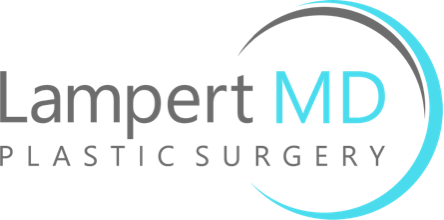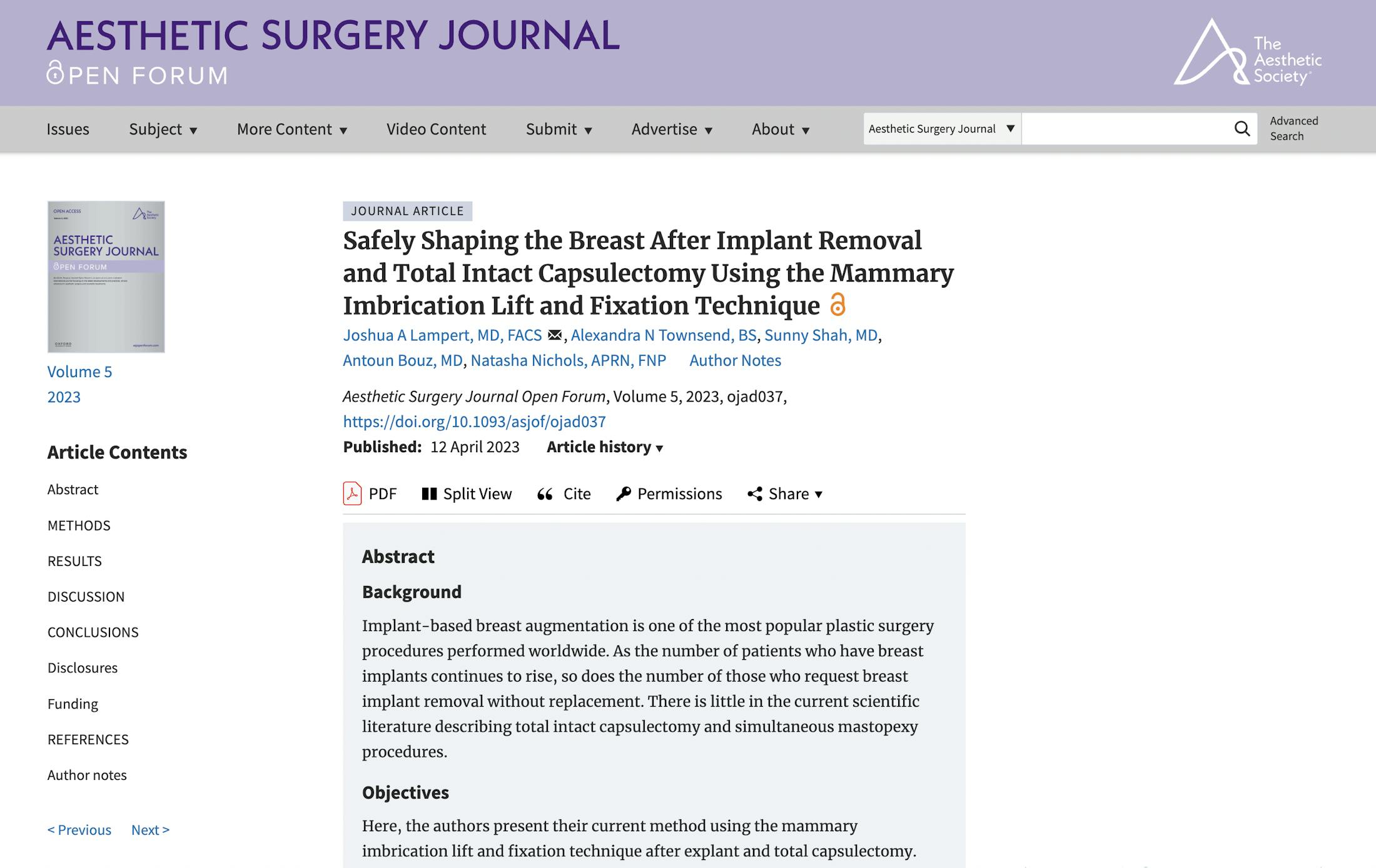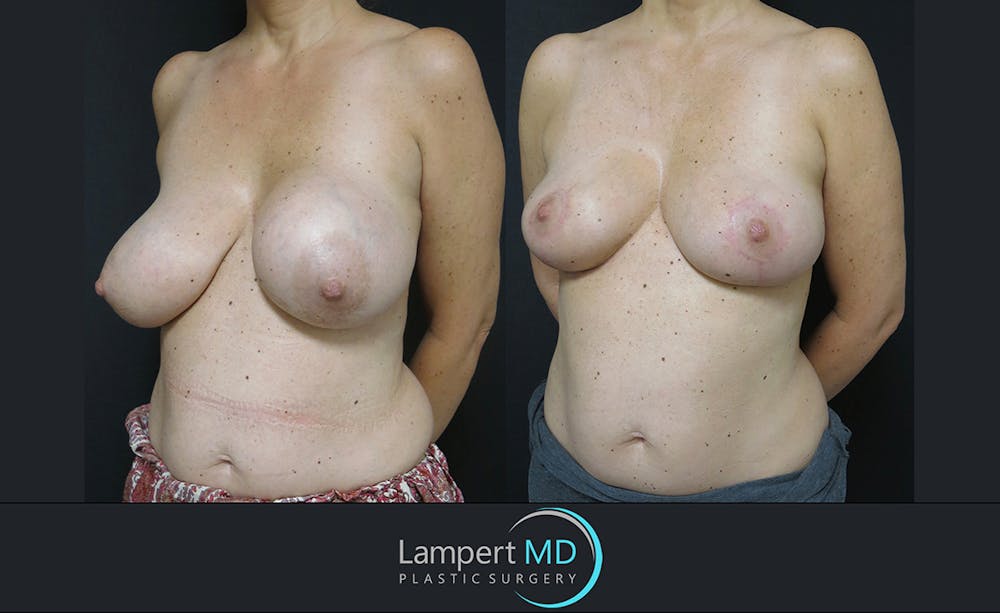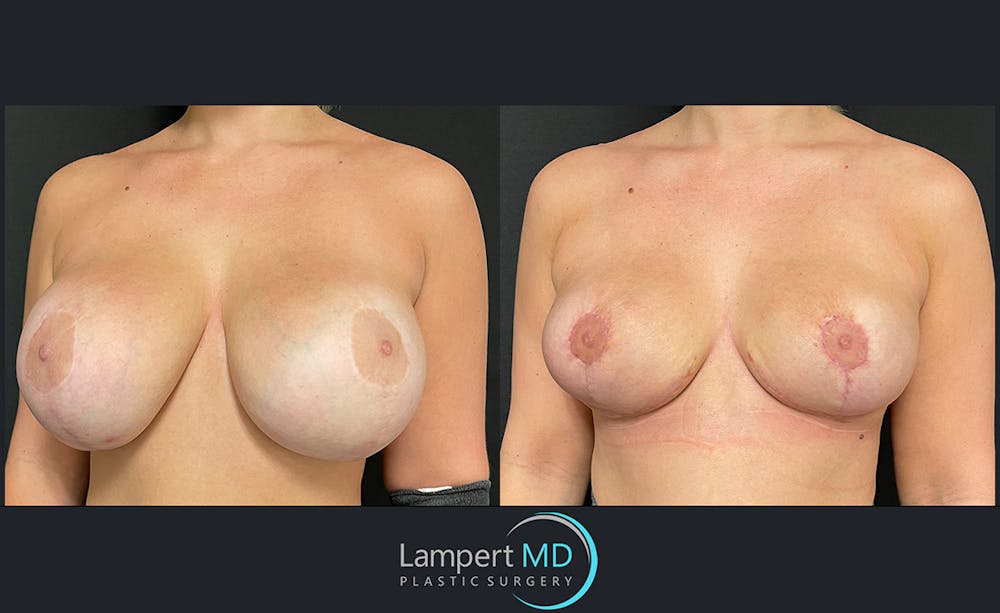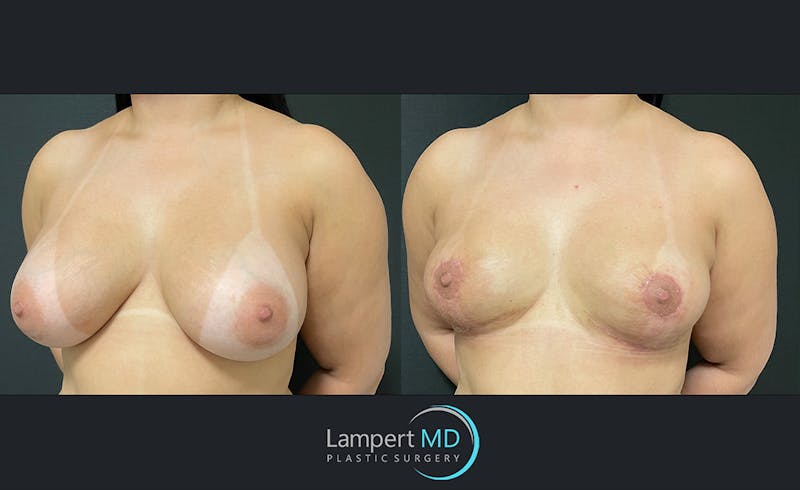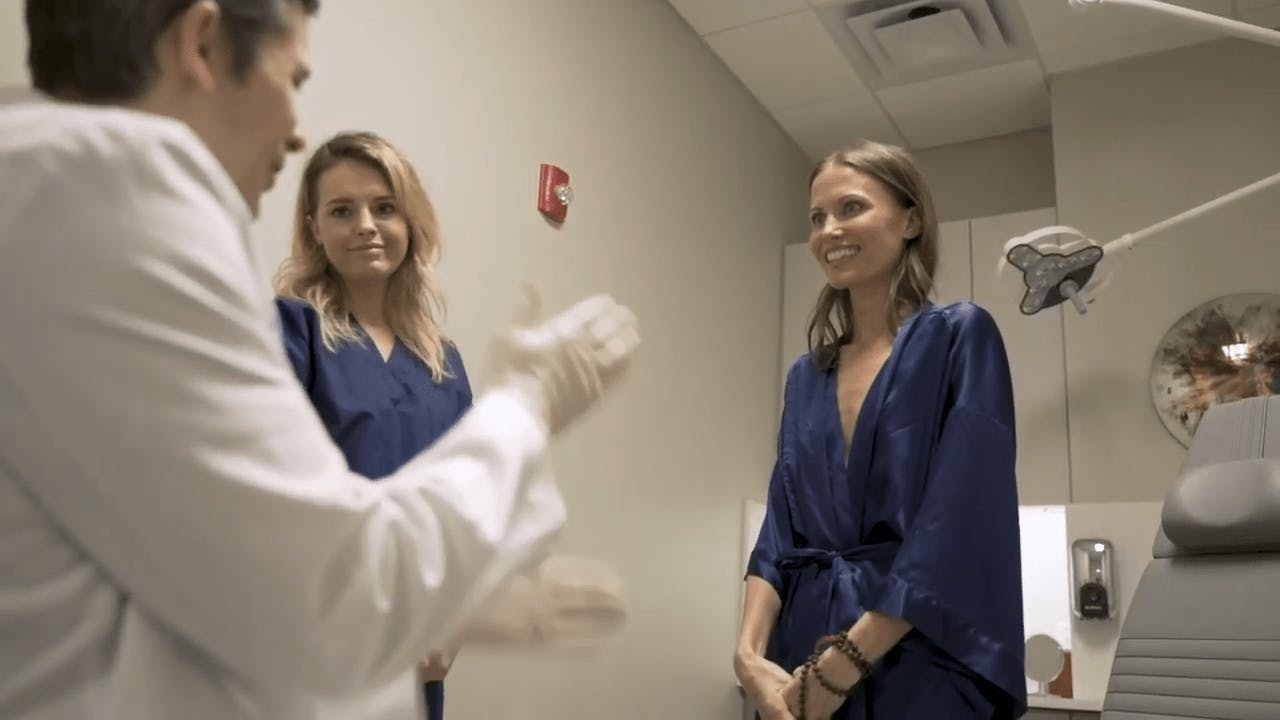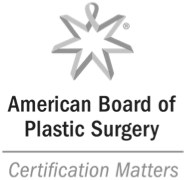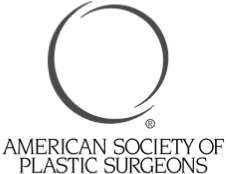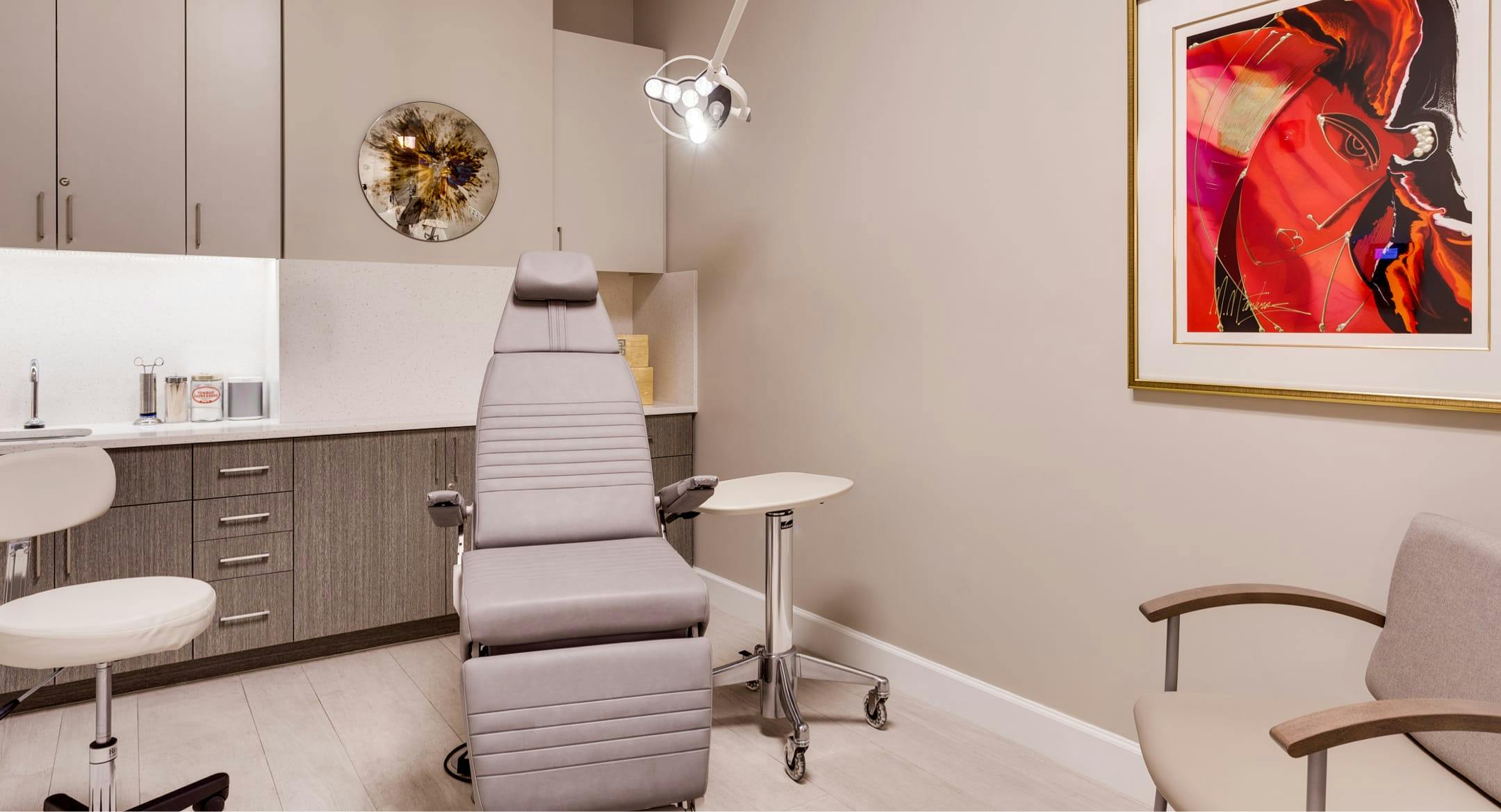Breast explant surgery should be safer than driving your car when performed by an experienced, board-certified plastic surgeon and overseen by an equally competent doctor of anesthesia.
En Bloc Capsulectomy
Safe en bloc capsulectomy takes more time and skill than simple breast implant removal or partial capsule removal. En-bloc capsulectomy often requires a breast lift incision or a larger breast fold incision when performed in order to adequately visualize important surrounding structures during capsule separation and in order to get out the en-bloc capsule and implant "in one piece without rupture." En bloc capsulectomy is ideal if there is any question of silicone implant rupture, significant fluid accumulation, extensive calcification, or a breast implant illness diagnosis. Many patients request this as well for various reasons. Many surgeons have voiced and even published their concerns about total en bloc capsulectomy safety, especially in submuscular breast implant patients.
The Mammary Imbrication Lift And Fixation Technique
Fortunately, Dr. Lampert has extensive breast reconstruction education and experience to fall back on. Utilizing this, he was able to develop the Mammary Imbrication Lift and Fixation Technique, which is his current method to safely perform en bloc total capsulectomy with implant removal and subsequent skin tailoring to shape the breast. The Mammary Imbrication Lift and Fixation Technique that he invented to deal with this problem allows safe total en bloc capsulectomy with submuscular breast implants and can be combined with simultaneous fat grafting, should the patient desire.
Simultaneous Breast Lift
After breast implant removal, the breast is often significantly deflated with loose skin. This is of higher risk with small-breasted patients who are removing larger implants. In these patients, collapse of the lower pole can occur, leading to rippled, irregular breast skin and even inversion or indentation at or near the nipple and areola. Breast fold deformity can occur as well. The most powerful maneuver to decrease deformity risk after implant removal in these patients is often a simultaneous breast lift.
Fat Transfer
Adjunct low-pressure liposuction with fat grafting to the breast provides another useful tool for the surgeon to optimize the breast aesthetic without an implant. In order to visualize the patient's breast tissue and any post-explant breast droop, Dr. Lampert always sits the explant and breast lift patient up in the OR several times during the surgery. He does this in order to see how the breast will look when standing. He places a drain to collapse the large pocket or space left behind when the implant and capsule have been removed. He then tailors any excess skin and tries to visualize regions of the breast that will require fat transfer, when applicable. He is also constantly referencing the nipple and areola position while the patient is upright. These steps take significant time but should not be skipped if the surgeon wants to best control the final aesthetic result.
Evaluating Patient Safety
Patient safety must always be evaluated and assessed perpetually. Every measure should be taken to always improve it. No cost should be spared when it comes to patient safety. It is expensive to afford the safest equipment, best medications, and most experienced doctors, nurses, surgical assistants, and medical professionals. But frequently in life, you get what you pay for. Explant and breast revision surgery is no exception!
Dr. Lampert’s Federally Certified Asc
Dr. Lampert performs all of his procedures at the hospital or his Ambulatory Surgery Center (ASC), Miami Surgery, LLC, which is Federally Certified by the Florida Agency for Health Care Administration (AHCA), the same agency that licenses all of the best hospitals in the state. It is currently one of only three other plastic surgery ASCs in Miami-Dade County Certified by AHCA, and as such, Dr. Lampert is held to the highest standards. Having control of his own ambulatory surgery center, he is able to provide patients the advantage of many surgical technologies and a higher quality of equipment that is not available at the hospital. Dr. Lampert has equipped his facility with the latest breast surgery and safety equipment, including a smoke evacuation system, high-definition imaging devices, LED lighting and visualization technology, power-assisted liposuction, video laryngoscopy, and much more. See the following link for details: https://www.lampertmd.com/
Choosing The Right Plastic Surgeon
Aesthetic results and safety metrics are ultimately the best when the given surgeon takes their time to ensure they did their best, remained detail-oriented, and cut no corners to get there. The fast procedure is often not the right procedure, although it may be the cheaper one. When interviewing a plastic surgeon, ask them how many times they sit you up during surgery. Ask them how much time they typically spend performing a procedure. If they pride themselves on sheer numbers, volume, and being fast, then they might not be the right surgeon for you! As with every creative, detail-oriented process, good work takes time.
